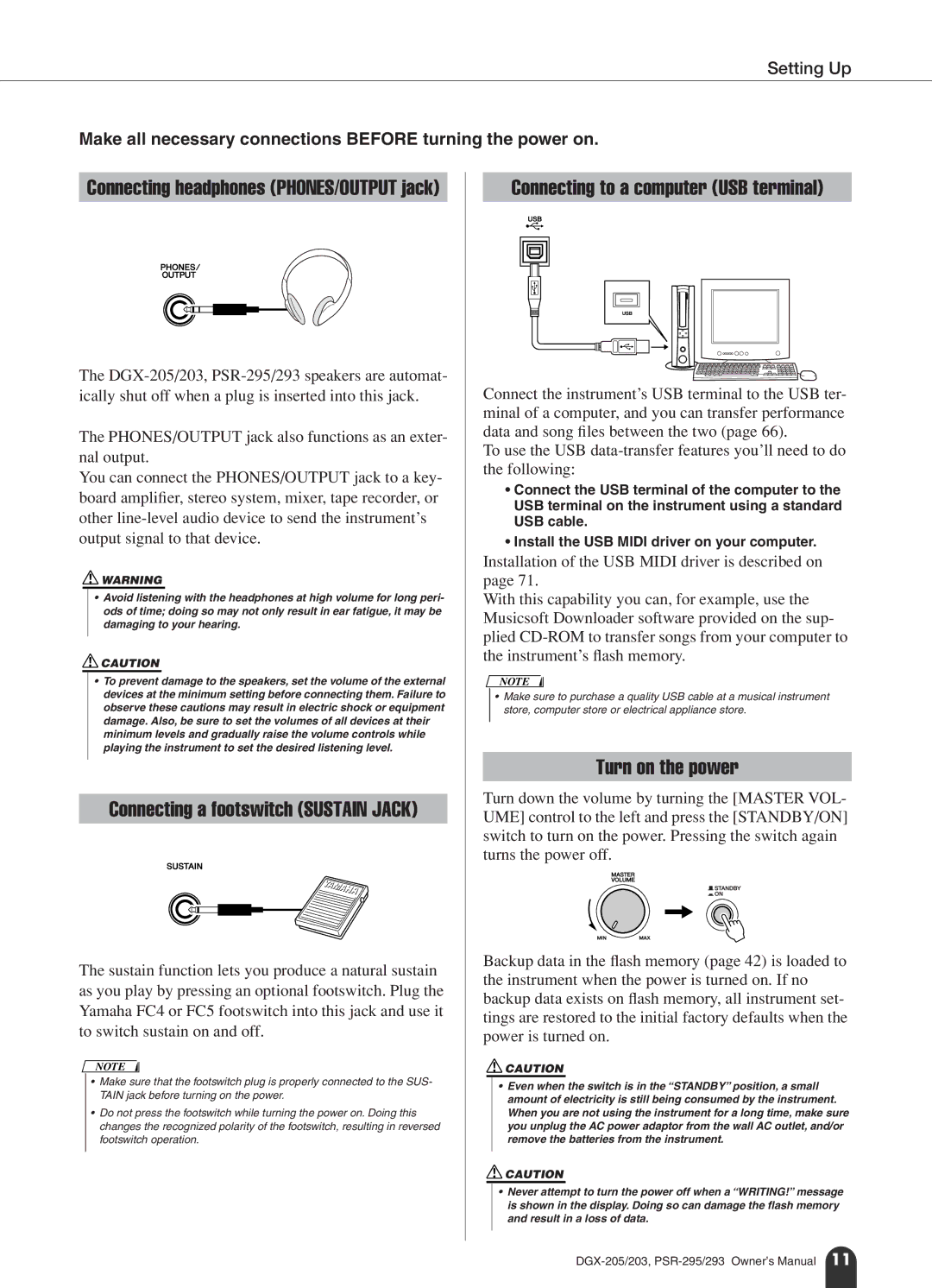
Setting Up
Make all necessary connections BEFORE turning the power on.
Connecting headphones (PHONES/OUTPUT jack)
The
The PHONES/OUTPUT jack also functions as an exter- nal output.
You can connect the PHONES/OUTPUT jack to a key- board amplifier, stereo system, mixer, tape recorder, or other
![]() WARNING
WARNING
•Avoid listening with the headphones at high volume for long peri- ods of time; doing so may not only result in ear fatigue, it may be damaging to your hearing.
![]() CAUTION
CAUTION
•To prevent damage to the speakers, set the volume of the external devices at the minimum setting before connecting them. Failure to observe these cautions may result in electric shock or equipment damage. Also, be sure to set the volumes of all devices at their minimum levels and gradually raise the volume controls while playing the instrument to set the desired listening level.
Connecting a footswitch (SUSTAIN JACK)
The sustain function lets you produce a natural sustain as you play by pressing an optional footswitch. Plug the Yamaha FC4 or FC5 footswitch into this jack and use it to switch sustain on and off.
NOTE
•Make sure that the footswitch plug is properly connected to the SUS- TAIN jack before turning on the power.
•Do not press the footswitch while turning the power on. Doing this changes the recognized polarity of the footswitch, resulting in reversed footswitch operation.
Connecting to a computer (USB terminal)
Connect the instrument’s USB terminal to the USB ter- minal of a computer, and you can transfer performance data and song files between the two (page 66).
To use the USB
•Connect the USB terminal of the computer to the USB terminal on the instrument using a standard USB cable.
•Install the USB MIDI driver on your computer.
Installation of the USB MIDI driver is described on page 71.
With this capability you can, for example, use the Musicsoft Downloader software provided on the sup- plied
NOTE
•Make sure to purchase a quality USB cable at a musical instrument store, computer store or electrical appliance store.
Turn on the power
Turn down the volume by turning the [MASTER VOL- UME] control to the left and press the [STANDBY/ON] switch to turn on the power. Pressing the switch again turns the power off.
Backup data in the flash memory (page 42) is loaded to the instrument when the power is turned on. If no backup data exists on flash memory, all instrument set- tings are restored to the initial factory defaults when the power is turned on.
![]() CAUTION
CAUTION
•Even when the switch is in the “STANDBY” position, a small amount of electricity is still being consumed by the instrument. When you are not using the instrument for a long time, make sure you unplug the AC power adaptor from the wall AC outlet, and/or remove the batteries from the instrument.
![]() CAUTION
CAUTION
•Never attempt to turn the power off when a “WRITING!” message is shown in the display. Doing so can damage the flash memory and result in a loss of data.
